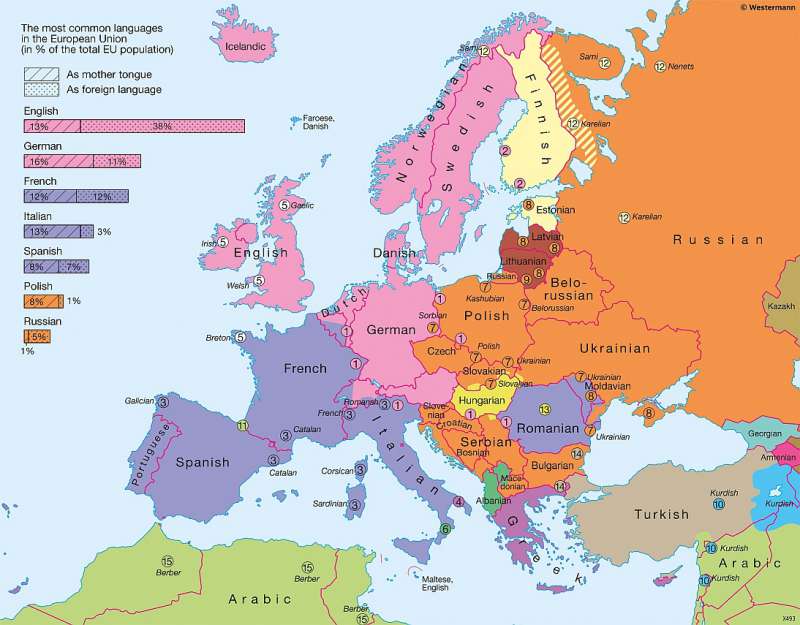National languages and language minorities
Europe - Population
978-3-14-100790-9 | Page 43 | Ill. 4

Information
Most of the languages spoken in Europe belong to the Indo-European language family and are written in Latin characters. This large family of languages presumably originated in the region between Central Europe and the Ural Mountains. Scholars do not agree on whether the first speakers were members of a homogeneous Indo-European people. The three most important branches of the Indo-European language family are the Germanic, Romance and Slavic languages. The Estonian, Finnish, Hungarian and Turkish languages exhibit no affinities to the Indo-European language family.From a centre located between Central Europe and the Urals, the Indo-Europeans split into expanding ethnic groups around 2000 BC. While one line of advance proceeded toward the Indian subcontinent and the Middle East, the other moved into Europe. The individual Indo-European languages emerged through processes of splitting and intermingling with indigenous language elements.
The Germanic languages comprise two distinct groups: the West Germanic (English, German, Dutch, Frisian) and the North Germanic languages (Swedish, Danish, Norwegian, Icelandic).
The Slavic language group consists of East Slavic (Russian, Ukrainian, Belarussian; Cyrillic alphabet), West Slavic (Czech, Slovak, Sorbian, Polish, Kashubian; Latin alphabet) and South Slavic (Slovenian, Serbo-Croatian, Bulgarian, Macedonian; all written in Cyrillic except for Slovenian). The Romance languages, all of which are outgrowths of Latin, which was carried into many regions of Europe in the course the expansion of the Roman Empir




